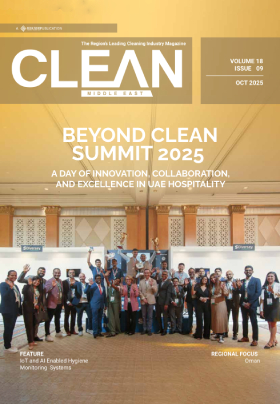
The whole world focused on #Mask #Social distancing #Vaccination
It is great but is it enough?
Let’s see what changes others are making.
Policy,
Product,
Procedures
Policy
- A comprehensive cleaning and infection control policy is needed to set an essence to establish SOPs, RFPs, SLAs & KPIs
- Business continuity plans are reassessed and changed.
- More emphasis is being given to succession planning and cross-training. Today, industries look for people with adaptive skills than subject matter experts.
- Budget provisions are made as per the new requirements
Product
- More emphasis is given to fresh and natural ventilation while designing new buildings or renovation
- The risk involved in the spread of infection through air conditioning is being studied. Systems are re-calibrated based on the new fresh air exchange requirements recommended by the local bodies
- Ergonomics is reworked in such a way that, the use of hands is minimised by the following:
- Touchless entry by installing kick plates or foot pedals.
- Biometrics can be replaced by NFC to make it a touch less entry today all smartphones come with NFC technology.
- Installing foot-operated pedals for elevators, sanitisers, & washbasins.
- Design incorporation is done for calculating social distancing by making larger floors, or while planning vinyl, epoxy, and carpeted floors for areas like elevators or in a cafeteria where people queue.
- Copper coated door knobs can be installed, [copper has the highest resistance against viruses].
- Install washable doormats that can withstand larger wash cycles and are easy to remove.
Procedures and frequency of cleaning, to be adapted are based on 4 important factors
M-I-L-D
Materials used in the building
More emphasis is given to the aesthetic of the building to reflect the image of the organisation. however, it’s important for your cleaning crew(CC) to adapt to the new trends, technologies and materials used.
For example: cleaning professionals are unable to differentiate between the material used for bathroom fittings and ACP(Aluminium Composite Panel) where the cleaning products and procedures are completely different though the material looks like.
Infectious Risk
It is important to understand the users to take necessary precautions.
For Example: Same cleaning material/procedure cannot be adapted in a commercial building having a diagnosis centre and child care centre at different levels. If a proper risk assessment, and infection control mechanisms are not in place, the cleaner will become a career of infection. It is important that the CC understands the risk associated with cleaning.
There are various swab testing kits available, to measure the level of hygiene. A swab test is done before and after cleaning to establish the microorganisms present on a surface/area.
Level of usage
User pattern in an area determines the soilage levels and type of soil to establish the process to adapt. Some areas may require higher levels of disinfection /cleaning product/ change of frequency based on usage.
For example: It was observed that there was a greater number of male users on the floor, using breakout areas for smoking. By finding out the user’s patterns and types, the management placed additional ash urns for smokers.
It also helps to calculate the budget for washroom consumables like tissue, toilet rolls and hand soap.
Dust movement in the air
Often, we assume if the traffic/footfall is low, the cleaning frequency can be reduced. But it’s also important to consider the movement of dust in an area. There are various products available on the market to deduct the amount of dust suspended in the air. It helps to find out if the air conditioning filters are in good condition and if the frequency of cleaning needs to be altered.
For example: A building was having balconies on two sides; one side of the building was facing a desert and the other side of the building was facing the city. Though it’s the same building and the same materials were used in construction the cleaning frequency differed based on the level of dust accumulated over a period of time depending on where the balcony was located.
Some tips to improve cleanliness and infection control
- A procedure should be established to handle potentially infected(PI) areas.
- Separate colour coded kits, including separate PPE and Cleaning material, can be kept aside for cleaning a PI area
- Garbage bags should be colour coded and a separate yellow colour biodegradable bag can be used for PI waste.
- Using different colour-coded dusters and mops for different areas like washrooms, corridors, lobbies, PI areas, High touch areas will eliminate the possibility of cross-contamination
- Replace Cotton dusters/mops with microfiber duster/mops for higher hygiene. Microfiber attracts fewer microbes compared to cotton.
- Different colour dusters/mops/garbage-cover used should be charted in the CC room for training.
- Make a procedure on how to wash dusters.
- A swab test can be taken before and after cleaning the PI area to check the level of microorganisms and ensure safe living.
- There are procedures involved in disposing of infectious waste, special training on handling biomedical waste should be given to the CC, (trainers are external Infection control experts).
 Though there is a lot to be studied, to unlearn and learn, I always believe One size never fits all.
Though there is a lot to be studied, to unlearn and learn, I always believe One size never fits all.
About the author:
Abhilash Bandaru is a Cleaning expert, consultant and a trainer with over 15 years of experience from leading Hotels and Facility management companies in UAE and India.

.jpg)
.jpg)
 Search
Search.jpg)
